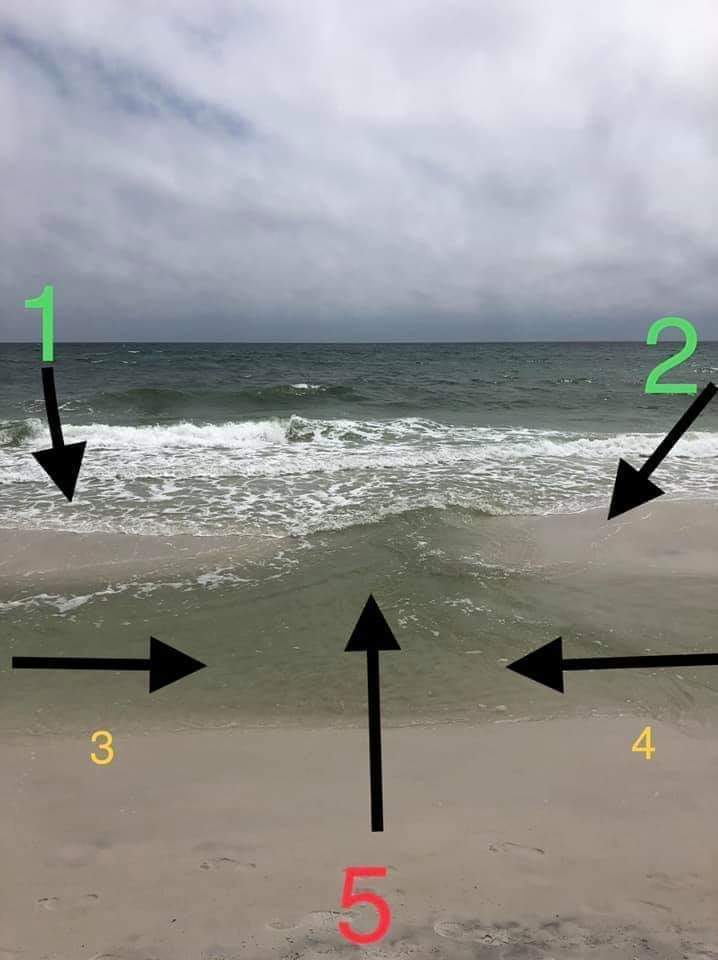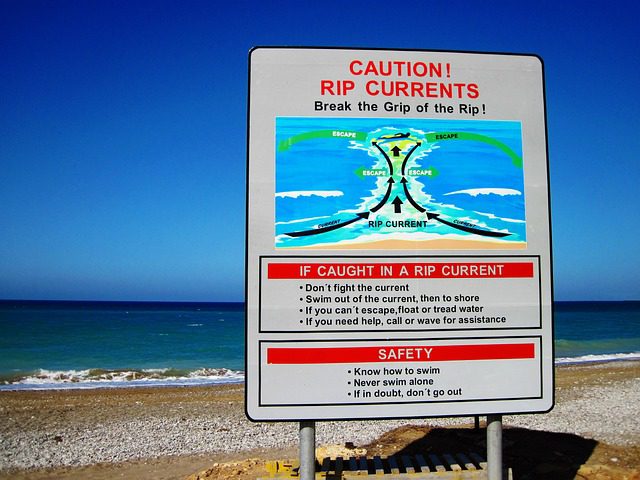Rip currents are powerful, localized streams of water that rush away from the beach, cutting through the lines of breaking waves and heading offshore. Although often confused with rip tides, which are caused by the ebb and flow of the tide, rip currents are solely water movement in one direction, usually perpendicular to the shoreline. Understanding how these currents form and behave is crucial, especially if you enjoy the surf zone, where waves break as they approach the beach. They can occur at any beach with breaking waves.
Table of Contents
ToggleRip Current Safety
Awareness of rip current safety is essential for all beach goers. The currents can move at speeds of over eight feet per second, which is faster than an Olympic swimmer. This strength and speed highlight why rip currents are often considered dangerous, even to the most experienced swimmers. Knowing how to identify a rip current and the steps to take if caught in one greatly increases your safety. This guide will help you stay informed, emphasizing the importance of never underestimating the power of rip currents.
In recent years, there has been an uptick in incidents of people drowning due to rip currents, stressing the need for public education on the topic. Should you find yourself in a rip current, remain calm and do not fight the current. Instead, swim parallel to the shoreline until you’re out of the current’s grip before heading back to land. By respecting the ocean’s power and understanding the signs and safety measures associated with rip currents, you can significantly reduce the risk of accidents when enjoying your time at the beach.

Arrows 1 and 2 represent the sandbars, which is where you want to be! (This is why we advise swimming parallel to the shore because you will get out of a rip and in most cases onto a sand bar.)
Arrows 3 and 4 represent the feeder current, which is water being drawn into the rip current. If you’re in a feeder current, you are being sucked into the rip!
Arrow 5 represents the rip current! That’s where water is being sucked out into the gulf and if you’re in the rip you’re going with it!
What is a rip current?
When you’re at the beach, understanding rip currents is vital for your safety. These powerful channels of water move away from the shore and can be quick, sometimes exceeding speeds that surpass an Olympic swimmer.
What causes rip currents?
Rip currents are formed when waves break strongly in some regions and weaker in others, creating a fast-moving stream of water that flows from near the shore back into the ocean. These currents often occur near breaks in sandbars or near structures such as piers and jetties.
Signs of a rip current
You can identify a rip current by a visible channel of churning, choppy water, or a difference in colour, indicating deeper water. Other signs include a line of foam, seaweed, or debris moving seaward and breaks in the incoming wave pattern.
How common are rip currents
Rip currents are common on many beaches around the world.
How far can a rip current take you?
Typically, rip currents are narrow and extend from the shoreline to just beyond the line of breaking waves, but they can pull you out hundreds of yards offshore.
How to swim out of a rip current
Should you find yourself caught in a rip current, remain calm and don’t fight the current. Swim parallel to the shore until you’re out of the current, then at an angle back to the beach.
How to survive a rip current
Surviving a rip current is about conserving energy and staying calm. Float or tread water if you can’t escape by swimming, and wave and yell for help if you need assistance.
Why are rip currents dangerous
Rip currents are dangerous because they can quickly carry swimmers into deeper water away from the safety of the shore. They’re a major hazard, responsible for the majority of lifeguard rescues and drowning deaths in the ocean surf zone.
Check the latest ocean conditions before heading to the beach and look for any beach warning flags. Swim near lifeguards and avoid swimming at unpatrolled beaches where rip currents may not be monitored.


